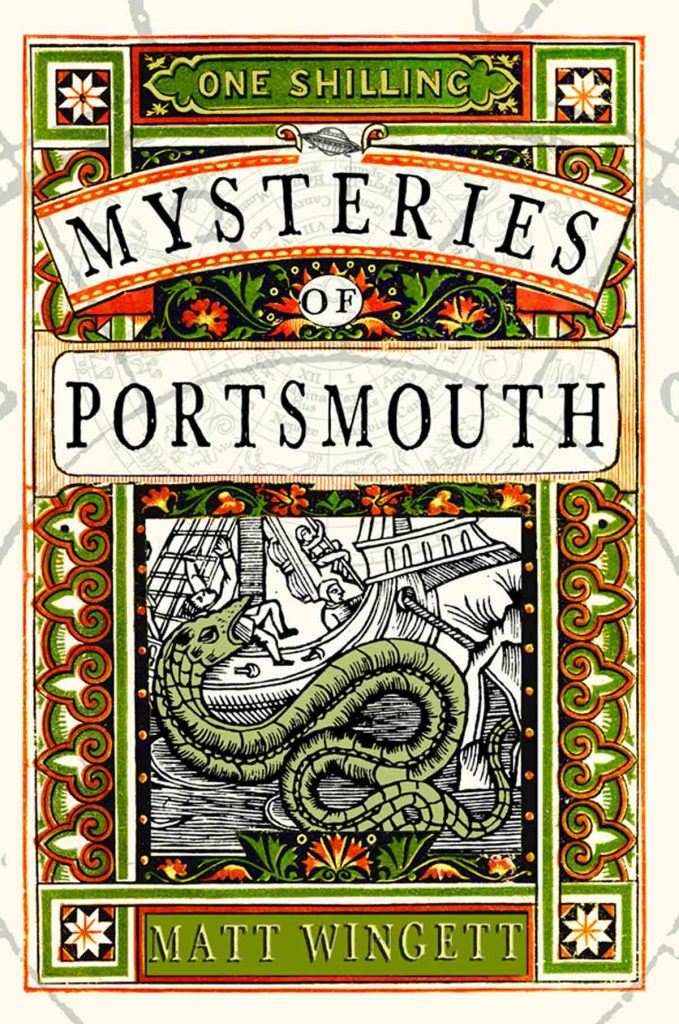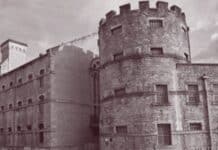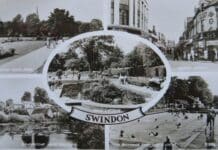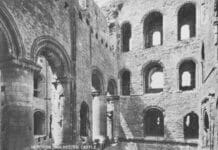MATT WINGETT – author of Mysteries of Portsmouth – reveals the ghosts and hauntings of Pompey…
1.) Wymering Manor, Old Wymering Lane, Portsmouth PO6 3NL
If haunted houses can be celebrities, then Wymering Manor, at the foot of Portsdown Hill to the west of Cosham is most definitely a rock star.
The ancient manor house’s history stretches back far into the distant past. The site is mentioned in the Domesday Book of 1086, its cellars (which still exist) are of Saxon origin, and there is even archaeological evidence of Roman habitation of the site. It was once at the centre of a large estate stretching out over the Hampshire countryside down toward a lonely and desolate shoreline along which a solitary road stretched between the local villages of Cosham and Fareham.
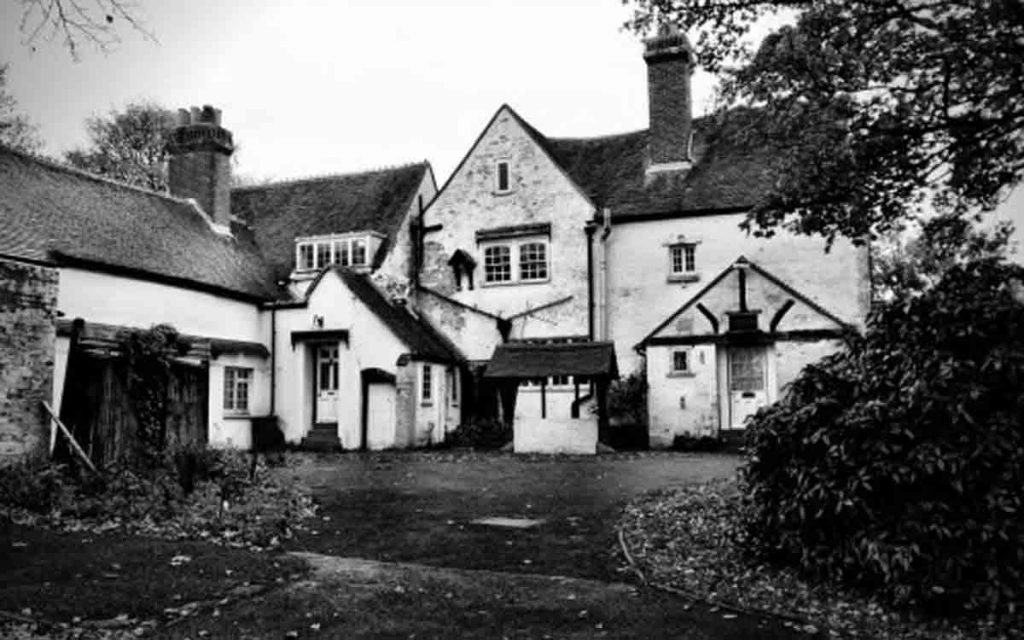
The majority of Wymering Manor dates from the 16th Century, with a spacious wood-panelled hall dominated by two barley sugar twist balusters of the Elizabethan era. Reflecting the deep religious tensions of the times, the house even contains two priest holes.
In its later years the manor was bought by Portsmouth City Council to prevent it being demolished. The remaining garden was sold to developers (meaning it is now fenced in by a 20th Century housing estate) and it was then leased to the Youth Hostels Association. More lately, it fell into such disrepair that in 2013 it was sold by the council to the Wymering Manor Trust for one pound, along with a start-up grant to restore it.
The manor has collected numerous ghost stories – to such an extent it was proclaimed by David Scanlan, founder of the Hampshire Ghost Society to be Hampshire’s Most Haunted House.
The ghosts of the manor include:
The Lady In The Violet Dress
This apparition came to visit the joint owner of the house Thomas Knowlys-Parr in 1917. Thomas, reputed to be a direct descendant of Catherine Parr (the fortunate queen who survived King Henry VIII) owned the house with his aunt, Mrs Nightingale. One night he woke to find a figure dressed in blue at the foot of his bed. This Lady In Violet he recognised as the spirit of a cousin who had died in the same year. This was not a frightening encounter. She stood and chatted with Thomas for a while, seeming to want to spend a little time catching up, before adding:
“Well, Tommy dear, I must leave you now as we are waiting to receive Aunt Em.”
At this point she vanished into thin air. The following morning Thomas received a telegram informing him that his Aunt Em had died during the night.
Reckless Roddy And His Panicked Horse
The dastardly Sir Roderick of Portchester, local folklore tells us, lived during the Middle Ages. One night, the lecherous and wicked knight heard that a newly-wed bride had been left alone in the house while her husband was called away to deal with an emergency.
Filled with reckless and violent lust, Sir Roddy rode to the manor to rape the solitary bride.
Thankfully, her husband returned home and chased Sir Roderick out of the house, cutting him down with his sword as he attempted to make his escape on horseback. In panic, the horse bolted.
It is said that from time to time the ghostly sound of a panicked horses’ hooves can still be heard clattering in the lane outside.
There have been various testimonies to the eerie sound of the ghost horse galloping away, including one during World War 2, and another from 1960, in which the Youth Hostel warden claimed to have heard it.
Though you might think he would have learned his lesson, the cruel Sir Roderick is said to appear if a newlywed enters the house.
The Grisly-Handed Nun
This apparition has been seen on many occasions over the years. Stories abound of hearing a choir of nuns singing and chanting, a weird sound that presages the sighting of the spectre of the nun, who appears, hands dripping with blood, on the stairs to the attic. One local legend claims that the room above, known as Noah’s Ark, is where the nuns performed abortions on members of their order who had formed illicit relationships with nearby monks. The bodies, it is claimed, were buried in the garden. To date, no infant’s bones have been found there.
Jane Austen’s Brother, Sir Francis Austen
Sir Francis was a naval officer who is buried at Wymering Church. This ghost does not appear to be particularly scary. One report says he “smiled at one of the staff”.
Lord knows why he did that, but at least his hands weren’t dripping with blood when he did it.
Other Effects And Haunted Rooms
The Blue Room has a door that unlocks itself and stands open, while the Panelled Room is said to have a deeply oppressive air, as of a malevolent presence. People have been known to run from it shaking with fear. Indeed, the aforementioned hapless Youth Hostel warden is said to have been extremely uncomfortable in the room, and more so after he experienced feeling a hand on his shoulder, only to discover there was no-one else there.
2.) Portchester Castle, Portchester, PO16 9QW
Portchester Castle has a long history and is a prime site to amass a residential spirit or two.
The ghost of a crusader is regularly seen around the Norman keep that was added to the Roman fortifications, with reports making it into the papers throughout the 20th Century.
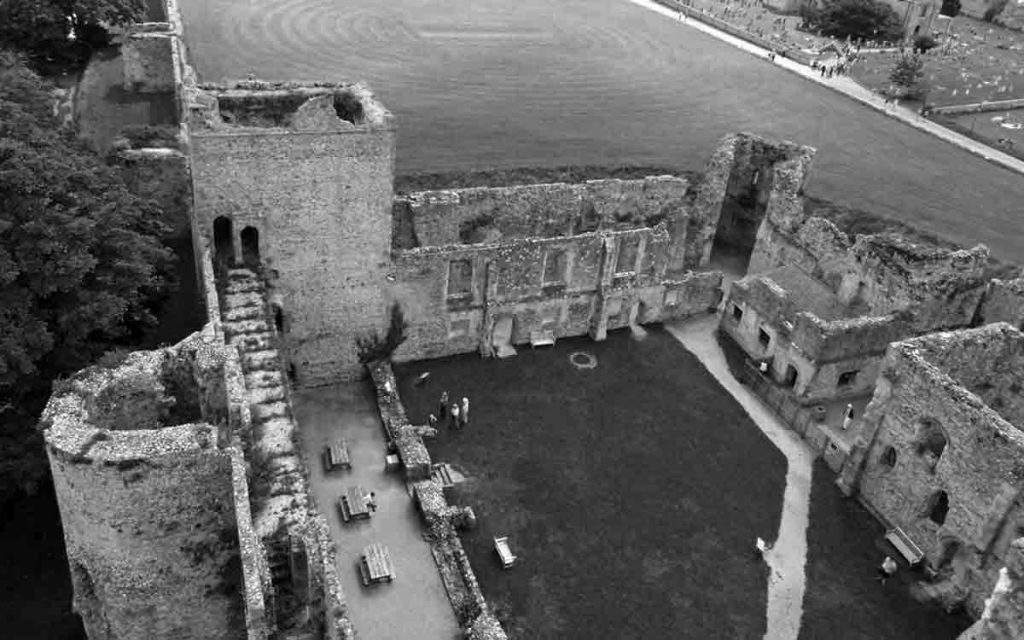
Among other spectres listed are:
- a murdered warder with a spear
- the Castle custodian doomed to carry a stone upon his back until such time as he reaches the Priory at Southwick before dawn
- two French prisoners who fight an eternal dual with separated halves of scissors
- the wife of the German soldier who drowned herself off the foreshore
- a gigantic ghostly boarhound.
3.) Portsmouth Cathedral, High Street, Old Portsmouth, PO1 2HH
One of the oldest buildings in Portsmouth is the old Church of St Thomas on Portsmouth High Street, which, in greatly extended form, became Portsmouth Cathedral
The church takes its name from none other than the murdered Archbishop of Canterbury, St Thomas Beckett, who was butchered by knights loyal to King Henry II in Canterbury Cathedral in 1170.
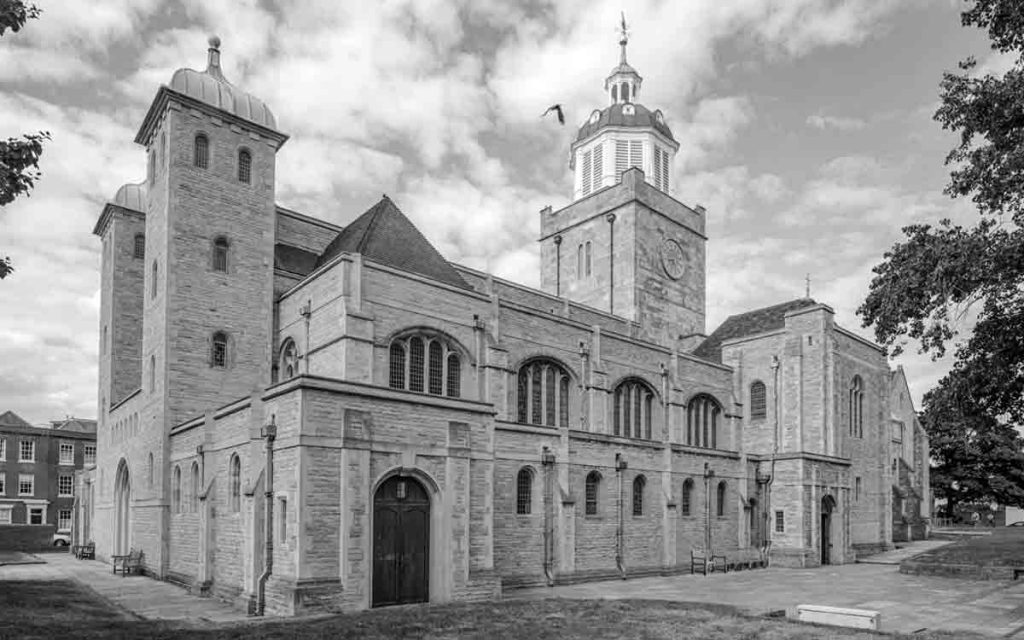
A fascinating story appeared in the parish magazine, apparently describing the apparition of St Thomas appearing to the Archdeacon. In the account, Arch-Deacon Lovett described seeing a dark shadowy figure kneeling and praying by the altar. He approached it, to see that it was a man hideously injured with gashes on his arms and his skull stoved in.
The story then goes on to describe the two men praying together in Norman French, before the ghost finally disappeared when the light was switched on by an assistant entering the church.
Whilst this story was published later in a collection of tales and described as pure fiction, interestingly an earlier account of the origins of the story can be found in the Daily Express of 1927. In interview with the paper, Lovett said:
“I wrote the story merely as an interesting experience. The friend who described it to me is quite reliable, but I related the story from a quite unbiased point of view.”
The Archdeacon closed the interview with the remark:
“Who could the figure have been but the spirit of St Thomas, unless, of course, my friend had some kind of vision. No one can tell.”
4.) HMS Victory and The Dockyard, Portsmouth, PO1 3NH
Sometimes a story is better in the telling than in the evidence for it. With video, ghost sightings can be a disappointment. Just so with a “ghost” filmed on HMS Victory.
An article in the London Metro newspaper, described how a man working on HMS Victory claimed to see a ghost – and not just any ghost, but that of Fanny Nelson, wife of Admiral Lord Nelson.
Yes, the footage does show a female figure in period dress moving on the deck, but there is nothing to substantiate his claim that it walked through a wall. Click here to see the footage for yourself.
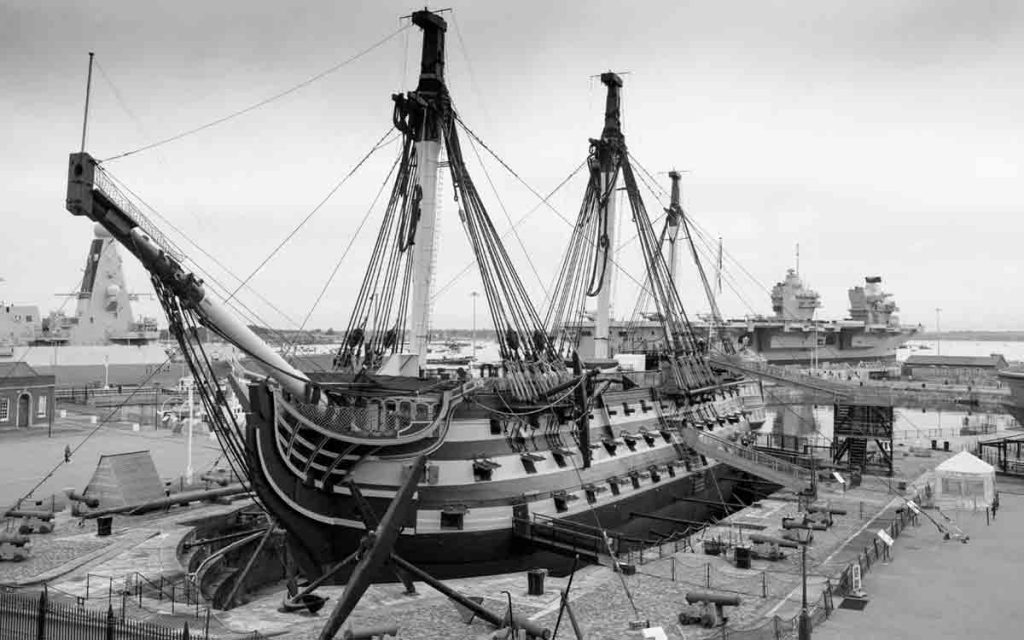
Anyone who has been in the Dockyard will know how notoriously difficult it is to distinguish ghosts from the numerous tour guides dressed in period costume…
There are, however, other reports of spirits in the Dockyard area. One that stuck with me was an account by a level-headed security guard I spoke with who encountered something unusual on his first night in the restricted part of the Dockyard, which has high security as part of Ministry of Defence land.
He talked about walking near the Georgian Ropehouse, when he saw a figure in the distance. It looked at him and quickly walked down an alleyway. He followed, and saw it turn left. When he got to the spot, he found the place it had walked had once had a doorway that was now bricked up.
With its old ships and historic buildings, the Dockyard, is well worth a look for those in search of spirits – not just Navy Rum.
5.) Fort Widley, Portsdown Hill, Cosham, Portsmouth, PO6 3LS
Fort Widley is a Victorian fort designed to repulse attack from the landward side of Portsmouth, and sits in a string of forts on the chalk downs overlooking the city. Beneath it is a massive network of tunnels, many not completely mapped, and there are stories of people getting lost there.
There are several accounts of ghosts to be found here, including reports of being followed by the presence of a tall, dark and shadowy figure with heavy footsteps, who is sometimes reported as carrying a lamp.
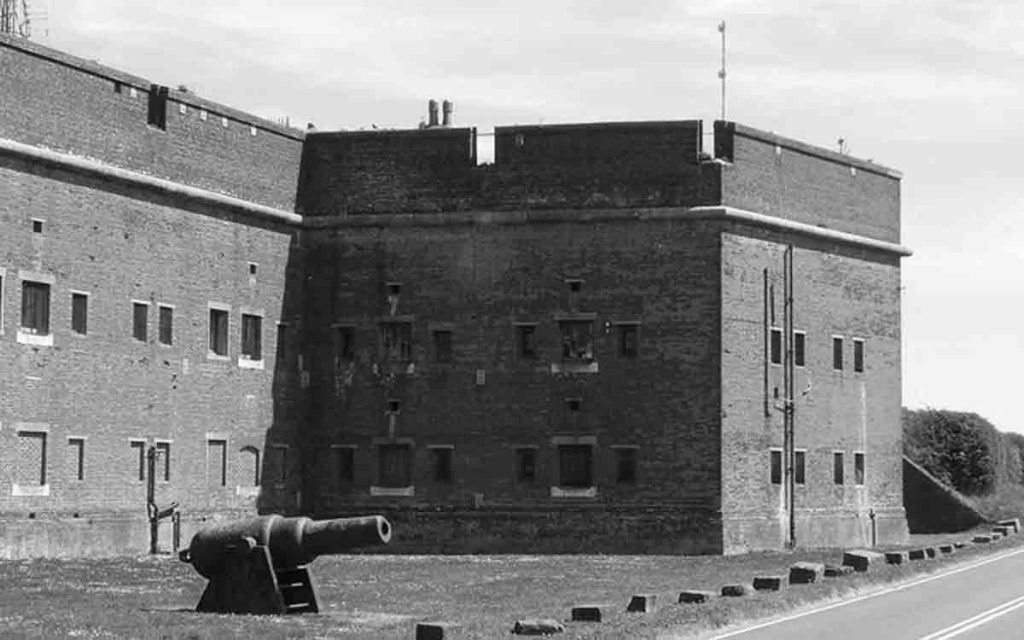
Another ghost is that of the little drummer boy, who died after falling down the stairs, and now wanders the complex.
Another of the several apparitions is The White Lady. She is the ghost of a woman said to have been strangled to death by her husband.
A supposed paranormal event was also captured by the Spirit Team tv show, who claim that one of their crew was “shoved” by a ghost in the Fort. You can make your own mind up by looking at the footage, on the Daily Mirror’s website here.
The great thing about video footage is you can decide for yourself!
7 Spooky Facts from Mysteries of Portsmouth
- Helen Duncan, the last woman to be imprisoned under the 1735 Witchcraft Act was arrested in Portsmouth for conjuring spirits, in 1944.
- The first UFO sighting to be recognised and investigated by the UK’s Ministry of Defence occurred over Portsmouth in 1950
- In 1848, a sea serpent was spotted in the waters of the Solent off Portsmouth by Vice Admiral Gore Jones. He sent boats to investigate and trap the animal, and discovered that the massive undulating snake-like shape was in fact a line of sticky soot that had been flushed from a passing ship.
- Spring-heeled Jack, the notorious Victorian super-athletic spectre was seen in the 1870s bounding over the tombstones of what is now Portsmouth Cathedral.
- Sir Arthur Conan Doyle attended his first séance in Portsmouth and converted to Spiritualism in 1887, the same year his first Sherlock Holmes novel, A Study In Scarlet was published.
- Sir Arthur Conan Doyle later claimed to speak with his dead son, Kingsley, in Portsmouth, in 1919.
- A prison warder in Victorian Portsmouth once dressed up as the ghost of the person a recalcitrant prisoner was accused of murdering. In fear, the prisoner confessed to the murder and the warder was sacked for his troubles!
